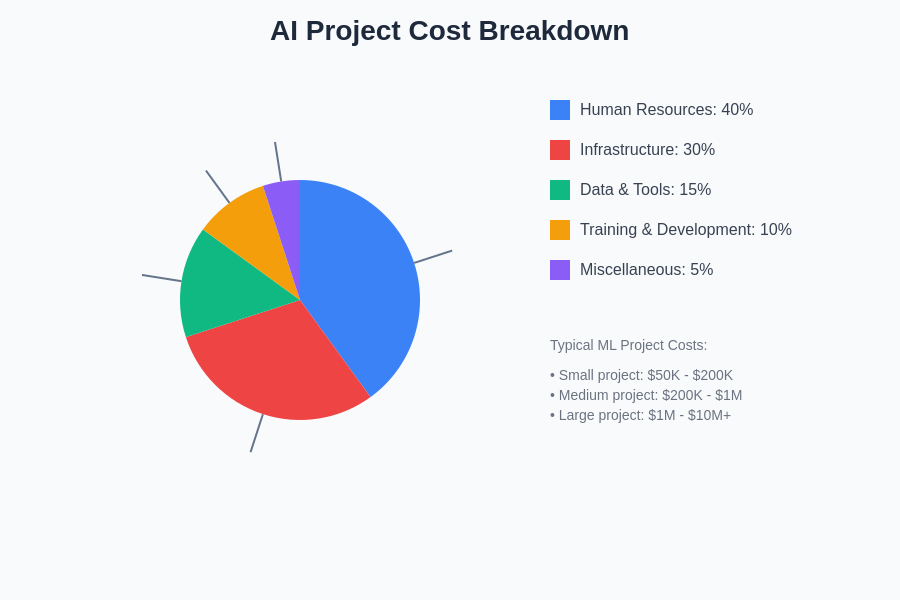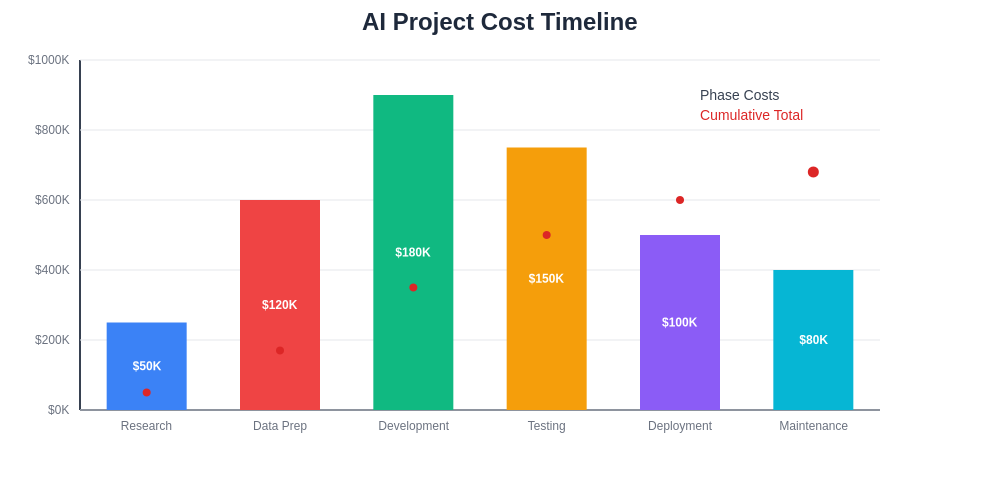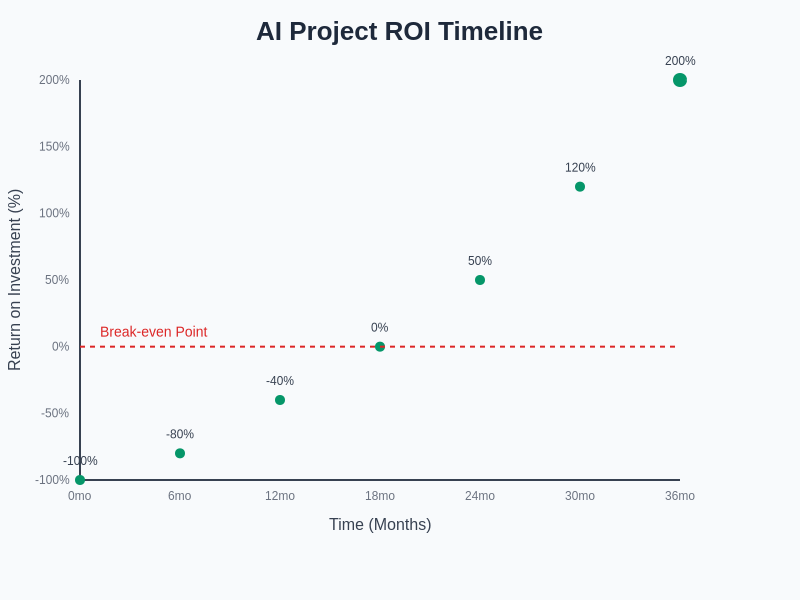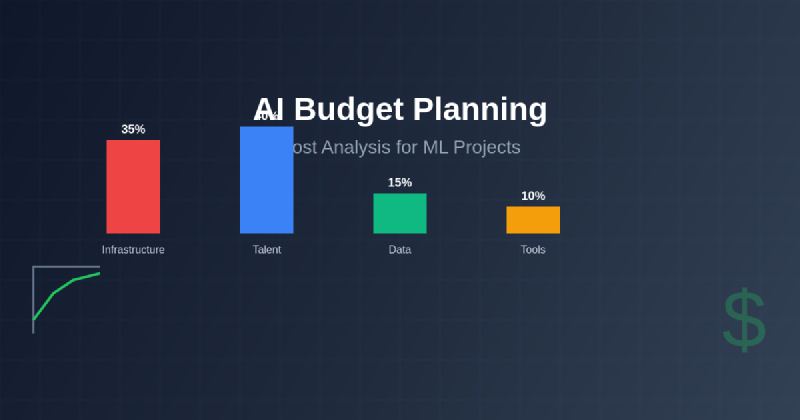The financial landscape of artificial intelligence and machine learning projects presents unique challenges that demand sophisticated budgeting strategies and comprehensive cost analysis. Unlike traditional software development initiatives, AI projects involve complex interdependencies between computational resources, specialized talent, data acquisition, and cutting-edge tools that can significantly impact project economics. Understanding these cost dynamics has become crucial for organizations seeking to implement AI solutions while maintaining fiscal responsibility and achieving sustainable returns on investment.
Explore the latest AI trends and cost-effective solutions to stay informed about emerging technologies that can optimize your AI project budgets while maximizing performance outcomes. The strategic allocation of resources across various AI project components requires deep understanding of both immediate expenses and long-term financial implications that extend well beyond initial development phases.
Understanding AI Project Cost Structure
The financial architecture of machine learning projects differs fundamentally from traditional software development endeavors, encompassing multiple cost categories that interact in complex ways throughout the project lifecycle. Infrastructure costs form the foundational layer of AI project expenses, including cloud computing resources, specialized hardware requirements, data storage solutions, and networking infrastructure that must scale dynamically based on computational demands and data processing volumes.
Human capital represents another critical cost component, with AI talent commanding premium compensation packages due to market scarcity and specialized skill requirements. Data scientists, machine learning engineers, AI researchers, and specialized consultants often represent the largest single expense category in AI projects, particularly when considering the extended timelines required for model development, training, and validation processes.
Tool and software licensing costs add another dimension to AI project budgets, with specialized platforms, development frameworks, and analytical tools often requiring substantial subscription fees or enterprise licensing agreements. These tools range from cloud-based machine learning platforms to specialized data visualization software, model monitoring systems, and automated machine learning frameworks that accelerate development but increase operational expenses.

Understanding the proportional allocation of resources across different cost categories enables more effective budget planning and resource optimization. Human resources typically represent the largest expense category, followed by infrastructure costs that can vary significantly based on computational requirements and scaling decisions.
Infrastructure Investment and Scaling Considerations
The computational requirements of machine learning projects create unique budgeting challenges that demand careful analysis of performance needs, scalability requirements, and cost optimization strategies. Training sophisticated models often requires substantial computational resources that can generate significant expenses over extended periods, particularly when working with large datasets or complex neural network architectures that demand high-performance computing capabilities.
Cloud infrastructure costs vary dramatically based on usage patterns, with training phases typically requiring intensive computational resources for relatively short periods, while inference and deployment phases may require sustained but less intensive resources over extended timeframes. Understanding these usage patterns enables more accurate budget forecasting and helps organizations choose appropriate cloud service configurations that balance performance requirements with cost efficiency.
Discover advanced AI capabilities with Claude for budget analysis and cost optimization strategies that can help maximize the return on your AI investments while minimizing unnecessary expenses. The selection of appropriate infrastructure configurations requires careful analysis of computational requirements, performance benchmarks, and cost-benefit ratios that align with specific project objectives and organizational constraints.
Data Acquisition and Management Expenses
Data represents the lifeblood of machine learning projects, and the costs associated with acquiring, cleaning, processing, and maintaining high-quality datasets often exceed initial budget estimates. Organizations must consider expenses related to data collection, whether through internal data gathering initiatives, third-party data purchases, or specialized data collection services that may be required for specific use cases or domain applications.
Data preparation and cleaning activities consume substantial resources, often requiring specialized personnel and sophisticated tools to transform raw data into formats suitable for machine learning applications. These preprocessing activities can account for significant portions of project budgets, particularly when dealing with unstructured data sources, legacy systems, or data quality issues that require extensive remediation efforts.
Storage and data management costs continue throughout project lifecycles, encompassing not only the direct costs of data storage but also backup systems, data governance implementations, compliance measures, and security protocols required to protect sensitive information. These ongoing expenses must be factored into long-term budget projections to ensure sustainable project operations.
Talent Acquisition and Team Building Costs
The specialized nature of AI and machine learning work creates unique challenges in talent acquisition and team building that significantly impact project budgets. Competitive compensation packages for AI professionals often exceed those of traditional software developers, reflecting the scarcity of qualified candidates and the high demand for specialized skills in areas such as deep learning, natural language processing, computer vision, and statistical analysis.
Training and development expenses represent another significant cost consideration, as AI technologies evolve rapidly and team members must continuously update their skills to remain effective. Organizations must budget for ongoing education, conference attendance, certification programs, and potentially extended learning periods as team members adapt to new technologies and methodologies.
Consultant and contractor expenses often supplement internal team capabilities, particularly for specialized tasks or during peak development periods. These resources typically command premium rates but provide flexibility in resource allocation and access to specialized expertise that may not justify full-time hiring for specific project phases.
Technology Stack and Tooling Investments
The selection of appropriate technology stacks and development tools significantly impacts both immediate costs and long-term budget requirements for AI projects. Enterprise-grade machine learning platforms offer comprehensive capabilities but often require substantial licensing fees, while open-source alternatives may reduce direct costs but increase development time and require additional technical expertise for implementation and maintenance.
Specialized hardware requirements, including graphics processing units for deep learning applications, can represent substantial capital investments or recurring cloud service expenses. Organizations must carefully evaluate the cost-benefit ratios of purchasing versus renting computational resources based on projected usage patterns and long-term strategic objectives.
Integration costs with existing systems often exceed initial estimates, requiring additional tools, middleware, and development effort to ensure seamless operation within established technology ecosystems. These integration expenses must be carefully planned to avoid budget overruns and project delays that can significantly impact overall project economics.
Enhance your research capabilities with Perplexity to gather comprehensive market intelligence on AI tools and technologies that can optimize your project budgets while maintaining competitive performance levels. The strategic evaluation of technology options requires thorough analysis of both direct costs and indirect impacts on project timelines and resource requirements.
Model Development and Training Expenses
The iterative nature of machine learning model development creates complex budgeting challenges that require careful consideration of experimentation costs, computational resources, and time investments required for achieving acceptable model performance. Initial model development often involves extensive experimentation with different algorithms, hyperparameter configurations, and architectural approaches that consume computational resources and personnel time without immediate productive outcomes.
Training sophisticated models, particularly deep learning architectures, can generate substantial computational costs that scale with dataset size, model complexity, and training duration requirements. Organizations must budget for multiple training cycles, as model refinement typically requires iterative improvements based on performance evaluation and validation results that may necessitate significant retraining efforts.
Model validation and testing expenses encompass both computational costs and personnel time required for comprehensive evaluation of model performance, bias analysis, and robustness testing. These quality assurance activities are essential for ensuring reliable model behavior but represent significant budget line items that must be incorporated into project planning processes.

The temporal distribution of costs across project phases reveals important patterns that inform budget planning and cash flow management. Development phases typically require the highest resource investment, while maintenance costs provide ongoing operational expenses that must be sustained throughout the system lifecycle.
Deployment and Production Infrastructure
Transitioning machine learning models from development environments to production systems introduces additional cost considerations that extend well beyond initial deployment activities. Production infrastructure must provide reliable performance, scalability, and availability characteristics that often require more robust and expensive configurations than development environments.
Monitoring and maintenance systems represent ongoing operational expenses that include performance tracking, model drift detection, automated retraining capabilities, and comprehensive logging systems that enable effective troubleshooting and optimization activities. These systems require dedicated infrastructure resources and specialized personnel to ensure continued model effectiveness and reliability.
Security and compliance implementations add another layer of production costs, particularly for organizations operating in regulated industries or handling sensitive data. These requirements may necessitate specialized security tools, encryption systems, audit trails, and compliance reporting capabilities that increase both initial deployment costs and ongoing operational expenses.
Hidden Costs and Budget Contingencies
AI projects frequently encounter hidden costs that can significantly impact budget performance if not properly anticipated and planned. Data quality issues often require unexpected remediation efforts that consume substantial resources and extend project timelines beyond initial projections. Organizations must build contingency budgets to address these unforeseen data challenges.
Regulatory compliance and ethical considerations may require additional resources for bias testing, fairness evaluation, and documentation activities that ensure responsible AI implementation. These requirements have become increasingly important as regulatory frameworks evolve and organizations face greater scrutiny regarding AI system behavior and societal impacts.
Integration complexity with existing systems often exceeds initial estimates, requiring additional development effort, specialized expertise, and potentially significant system modifications to ensure seamless operation. These integration challenges can create cascading effects that impact multiple project components and require careful budget management to avoid overruns.
Return on Investment Analysis
Developing comprehensive return on investment models for AI projects requires sophisticated analysis that considers both quantitative benefits and qualitative improvements that may be difficult to measure directly. Cost savings through automation, improved efficiency, and reduced error rates represent tangible benefits that can be measured and compared against project investments to determine financial viability.
Revenue generation opportunities through improved customer experiences, new product capabilities, or enhanced decision-making processes often provide the strongest justification for AI investments but may require longer time horizons to realize full benefits. Organizations must develop realistic projections that account for implementation timelines and market adoption patterns.
Risk mitigation benefits, including improved fraud detection, enhanced security capabilities, and better regulatory compliance, provide value that may be difficult to quantify but represents important considerations in overall investment analysis. These risk-based benefits often justify AI investments even when direct revenue impacts are uncertain or delayed.

The return on investment timeline for AI projects typically follows a characteristic pattern with initial negative returns during development phases, followed by gradual improvement as systems become operational and benefits accumulate over time. Understanding this timeline helps organizations set realistic expectations and maintain commitment through the initial investment period.
Cost Optimization Strategies
Effective cost optimization for AI projects requires systematic analysis of resource utilization patterns and strategic decisions about technology choices, team structures, and development approaches. Cloud resource optimization through appropriate instance selection, automated scaling, and efficient resource scheduling can significantly reduce infrastructure costs without compromising project outcomes.
Open-source tool adoption can reduce licensing expenses while providing access to cutting-edge capabilities, though organizations must carefully evaluate the total cost of ownership including support, training, and development time requirements. Strategic partnerships with technology vendors may provide access to enterprise capabilities at reduced costs through pilot programs or strategic collaboration agreements.
Phased development approaches enable organizations to validate assumptions and optimize resource allocation before committing to full-scale implementations. These staged approaches reduce risk while enabling iterative improvements to budget accuracy and project scope definition based on actual experience and performance data.
Long-term Financial Planning
Sustainable AI initiatives require comprehensive long-term financial planning that extends well beyond initial project implementation phases. Model maintenance and updating requirements create ongoing expenses that must be incorporated into operational budgets to ensure continued system effectiveness and relevance as data patterns and business requirements evolve.
Scaling considerations become critical as successful AI implementations expand across organizational functions or customer bases. Organizations must plan for infrastructure scaling, team expansion, and additional tool requirements that accompany successful AI adoption while maintaining cost efficiency and performance standards.
Technology evolution and modernization requirements ensure that AI systems remain current with advancing capabilities and security requirements. Long-term budgets must account for periodic system updates, technology migrations, and capability enhancements that maintain competitive advantage while managing obsolescence risks.
The strategic approach to AI budget planning ultimately determines project success and organizational capability development. Organizations that invest in comprehensive cost analysis, realistic budget projections, and systematic optimization strategies position themselves for sustainable AI adoption that delivers measurable business value while maintaining fiscal responsibility. The complexity of AI project economics demands sophisticated financial planning approaches that account for both immediate requirements and long-term strategic objectives in an rapidly evolving technological landscape.
Disclaimer
This article is for informational purposes only and does not constitute financial or investment advice. The cost estimates and budgeting strategies discussed are based on general industry observations and may not reflect specific organizational requirements or market conditions. Readers should conduct thorough analysis of their particular circumstances and consult with qualified financial and technical professionals when developing AI project budgets and investment strategies.
